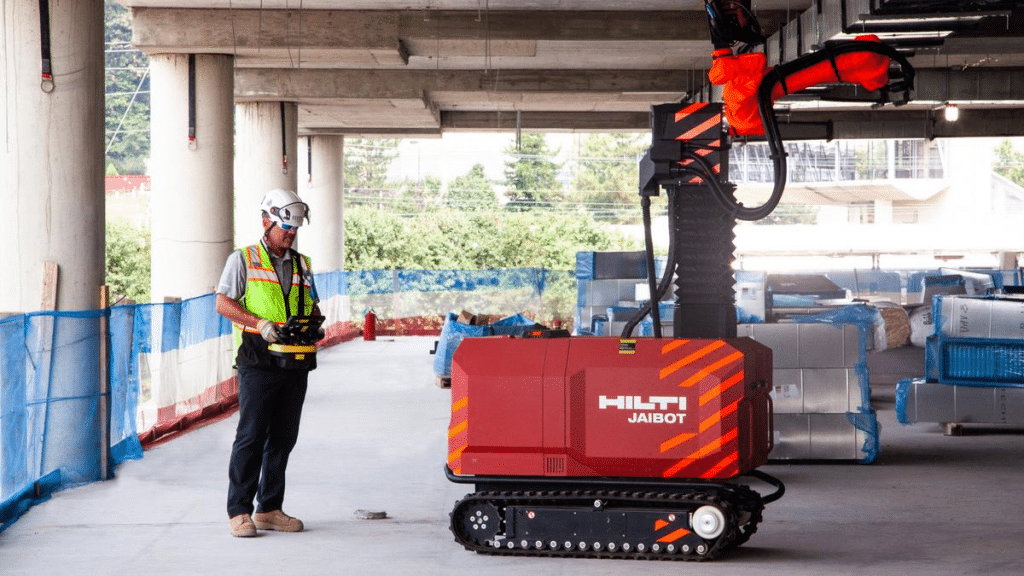Robots on construction sites are reshaping how we build, marking a turning point could forever transform the industry. This evolution points to a future where automation and precision go hand in hand with human expertise.
How is robotics being integrated into construction projects and what major changes does it bring for workers? From boosting efficiency to redefining labor roles, construction robots and automation are having a profound, multi-layered impact.
For decades, robotic technology in construction lagged behind other sectors like manufacturing or healthcare. Today, it’s catching up fast-driven by the urgent need to improve productivity and reduce risks on site.
As robotics becomes more integrated into construction sites, it’s also crucial for workers to stay informed about their rights. Understanding what to do in case of an accident and seeking legal advice when needed can make a significant difference.
Robotic Technology in Construction
One of the most widespread uses of automation in construction sites today involves mobile robots assisting workers or carrying out tasks such as inspection, mapping, or monitoring. These robotic solutions increase productivity, minimize human error and generate major cost savings.
Still, construction environments are dynamic and demanding, posing unique challenges to the safe deployment of robotic systems. To better understand the transformation underway, here are key examples of how robots are used in construction:
. 3D Concrete Printing
This method constructs buildings layer by layer, reducing waste, increasing design freedom, and delivering tailor-made solutions.
. Autonomous Excavators
Equipped with AI, sensors, and GPS, they handle digging and grading without constant human oversight.
. Bricklaying Robots
These semi-automated machines lay bricks with high speed and precision, allowing human workers to focus on more technical or creative tasks.
. Drone Surveying
Drones capture aerial imagery and create 3D maps to monitor hard-to-reach areas, cutting down on hazards and improving oversight.
. Robotic Arms
Often used for welding, painting, or assembling components, they deliver exceptional precision and reduce the need for rework.
AI and Robots in Construction
A major challenge in integrating robotics in construction is ensuring worker safety when humans and machines share space. Hazards may be direct, like collisions, or indirect, such as distractions or interference from environment factors like noise or dust.
Studies led by researchers such as Hashem Izadi focus on improving safety protocols for mobile robots. His fieldwork with semi-autonomous machines has shown that workers’ acceptance often depends on the robot’s design and function.
While drones are now standard equipment, ground robots still cause concern-especially when they look humanoid or animal-like. Industrial-looking machines tend to gain more trust.
Legally, differences between flying and land-based robots matter too. Drones operate autonomously under remote supervision, but ground robots must often be teleoperated when near people. This distinction affects deployment logistics and overall efficiency on site.
As the industry continues to change, legal guidance will play a key role in ensuring that technological innovation goes hand-in-hand with human dignity and labor rights.
Benefits of Robots on Construction Sites
Despite skepticism, robots on construction sites aren’t here to take jobs, they’re here to transform them. When properly implemented, their role becomes complementary, not competitive. Their benefits are both immediate and long-term:
. Enhanced safety and efficiency
By handling high-risk or repetitive tasks, robots lower the chance of accidents and make operations run more smoothly.
. New skill development
Workers are acquiring new competencies in programming, maintenance, and system control, promoting upskilling and job resilience.
. Job creation
Far from eliminating work, robotics is creating demand for tech-savvy engineers, programmers, and technicians.
. Improved collaboration
The latest construction robots are designed to work alongside humans, not replace them—leading to more coordinated and productive teams.
Robots Transforming the Construction Industry
The future of robotics in construction is not just about advanced machines—it’s about transforming the entire workflow. The potential is huge:
- Robots can work continuously without fatigue, keeping projects on schedule and improving the quality of results.
- Automating repetitive tasks cuts labor costs and reduces waste, allowing funds to be reallocated to other project needs.
- Robotic systems are highly adaptable, scaling from small to large sites based on project complexity.
- Still, over-reliance on machines carries risks: technical failures can halt operations, and not all workers are comfortable with rapid tech integration.
Whether injuries are caused by machine malfunction, poor supervision, or unclear safety protocols, every worker has the right to a secure environment. As they become more common on job sites, it’s essential that workers understand how to operate alongside this new technology and how to protect themselves in the event of an accident.
Robots on construction sites doesn’t eliminate risk entirely, and human safety must remain the top priority. Accessing legal advice isn’t just for extreme cases, it can help clarify responsibilities, protect your job security, and even improve site-wide safety standards.
